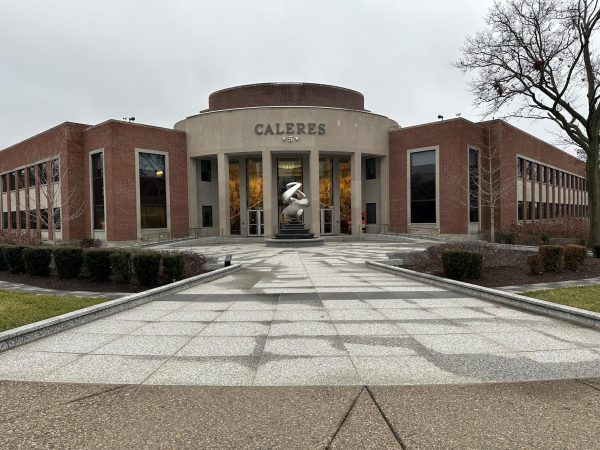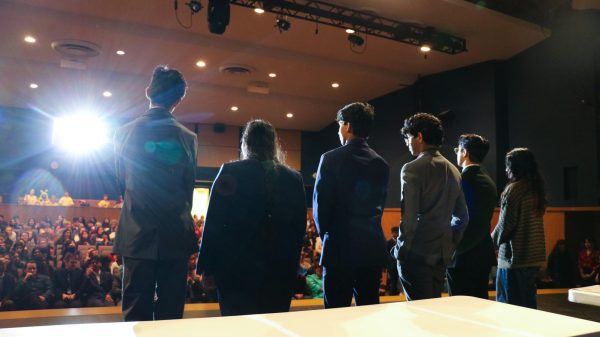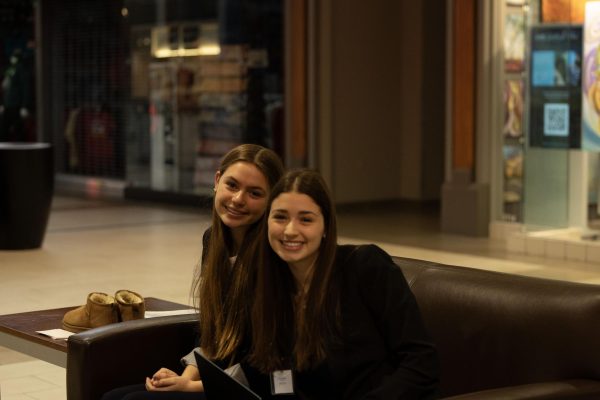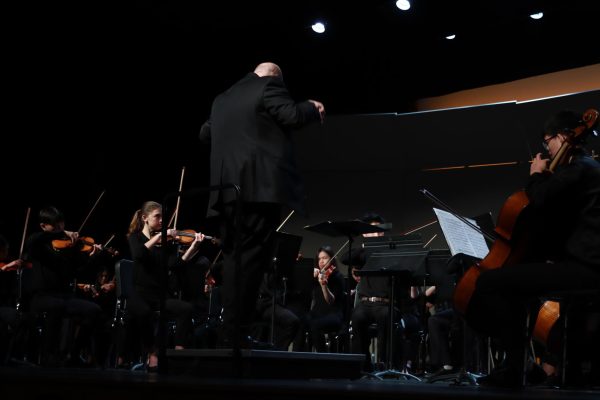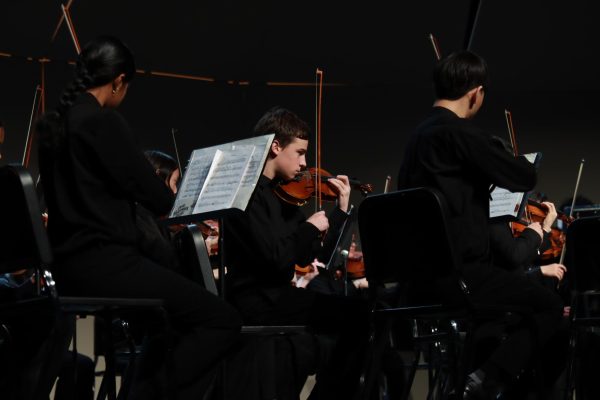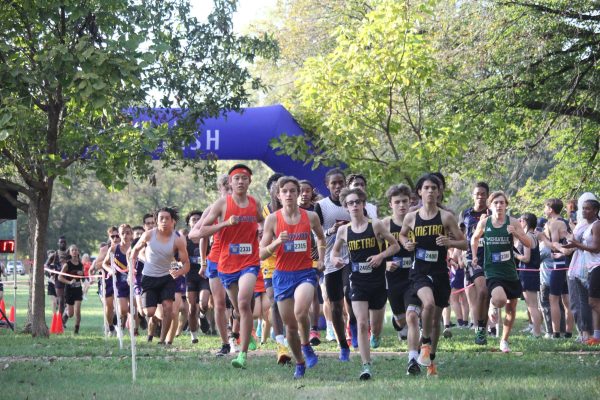A Joint Operation
He was only expecting a handful of people.
But when Dr. Gregory Batenhorst, Assistant Superintendent of Student Services for the Clayton School District, walked into a meeting in April, 45 Clayton parents were present to voice their concerns about how alcohol and drug abuse is handled in the community.
“A group of caring parents approached the District about how we could possibly raise the level of our services of students and families who may be struggling with alcohol and drug concerns,” Batenhorst said.
Beth Deutsch, spearhead of this parent group, came to the School District in March to express her concern about substance abuse among students at CHS, as well as the lack of resources and assistance she felt families get from the District when dealing with the issue.
After doing so, Deutsch reached out to friends and acquaintances and asked them to come to a meeting with Batenhorst if they shared similar concerns.
At the April meeting, Batenhorst wanted to learn about the parents’ perspectives on the topic of alcohol and drug use and abuse among teenagers.
“I opened up the discussion and asked the parents this: ‘I really want to ask myself and you two questions. Number one: what is it that parents want and need? Obviously you are coming to us with a concern about alcohol and drug use and abuse. [Number two]: what do parents know about the problem?”’ Batenhorst said.
In this dialogue, Batenhorst gained a greater insight on the struggles that families face when dealing with alcohol and drug abuse among adolescents.
“The stories that they told were very personal and very powerful,” Batenhorst said. “I could listen to their stories and hear a lot of pain in their voices.”
This meeting propelled Batenhorst and the District to act upon the concerns that were expressed by the parents that came to them through the establishment of a task force that could look at the issues more in depth.
The Clayton Alcohol and Drug Task Force met for the first time, over the summer, as a formal group of about 20 parents, administrators, counselors, student resource officers, two CHS students and a representative from the National Council of Alcohol and Drug Abuse.
CHS principal Dr. Dan Gutchewsky is a sitting member on the Task Force and finds it to have a powerful collection of individuals.
“We have a very strong group of parents and community members that are very passionate about this,” Gutchewsky said. “I think that this group has galvanized in a way that I haven’t seen before in the 15 years that I have been here.”
In forming the Task Force, Batenhorst asked high school counselors and administrators for recommendations of students that they thought would be good representatives of CHS.
“I asked them for kids that were pretty well balanced academically, socially; ones that crossed over different social groups and had pretty good heads on their shoulders,” Batenhorst said.
CHS junior Auriann Sehi is one of the two active student members on the Task Force. She joined the group because of her desire to express the viewpoints of teenagers on the subject matter of alcohol and drug use in Clayton.
“I think that with something like this, they really need a student’s perspective, whether it was my perspective or anyone else’s perspective,” Sehi said.
Based on a protocol from a Washington University professor, the Task Force is working methodically to make an impact on the Clayton community concerning substance abuse.
“We are identifying symptoms. From those, we are going to delve into what we think are the root causes for the abuse. After that, we are going to move into the solution and implementation phase to make sure that we are not missing anything,” Deutsch said.
Over the summer, the Task Force created a Correlated Symptoms List, containing 39 symptoms, or things that Clayton students are engaging in regarding drug and alcohol use. The group also categorized these symptoms under whose responsibility it is to deter them from happening.
“Students are getting high during lunch and then returning to school. That’s a symptom. Students are dealing drugs in school, including in the restrooms, that’s a symptom. Students are selling prescription drugs to peers, that’s a symptom,” Batenhorst said. “So we identified all the symptoms and we looked at the list and posed the question of who is responsible for making sure those things don’t happen and/or who is responsible for responding to helping kids and families deal with it if it happens.”
The student members on the Task Force were out of town during the summer months when the symptoms list was created and, therefore, were unable to contribute to it. Sehi finds that the list contains many misconceptions because it was made without students’ perspectives.
“I think that they had good intentions, but a lot of the things that they were saying came from ignorance because they don’t know what’s going on,” Sehi said. “They are seeing it from a parent perspective and that it is black and white and really easy to solve, but it’s not.”
In conjunction with the creation of the Correlated Symptoms List, the Task Force is also working to form a support group for families in Clayton dealing with substance abuse. Gutchewsky believes that the implementation of such a group would be beneficial to the Clayton community.
“It can be a very alienating and lonely feeling when you feel like if you have a child that has some substance abuse issues, then you kind of feel alone in it,” Gutchewsky said. “Just being able to connect folks with other people that have either experienced it or with resources is a really valuable thing.”
In addition to the formation of a support group, one of the main focal points of the Task Force now is to examine the freedom given to CHS students. Batenhorst believes that this freedom, such as an open-campus policy, might be propelling some students towards the use of drugs and alcohol during the school day.
“I think that there is a perception among some of the parents that one of the hallmarks of Clayton is the independence that is given to kids and the trust that is put into the hands of [students] to make good decisions,” Batenhorst said. “Maybe that’s been too much freedom given to kids. Maybe there’s a correlation between the freedom given to kids and students getting involved in alcohol and drug use.”
For Deutsch, one of her largest concerns is the fact that some Clayton students are using alcohol and drugs during the school day. Her son, Henry, former CHS student who is now in boarding school in Utah, did this frequently and was never caught by administration.
“The expectation is that when our kids are at school, they should be safe and in a drug-free environment. An abuser can always find a way, we all know that,” Deutsch said. “But I have learned that there are things that we can put in place with policy and procedure to make it a lot more difficult for any student to be using during school hours.”
Sehi believes that any regulation changes would result in negative responses from the students at CHS.
“If they do pass anything, in terms of a policy change or anything, it would just be reacted to with some kind of uproar,” she said.
Although the Task Force is not currently open to the public, the group is striving to eventually create a more accessible and formal group to better the process in which substance abuse is handled in the School District.
“In the long run, we are looking towards putting together what is called an Alcohol and Drug Free Coalition, which is a bigger group that would meet on a regular basis,” Batenhorst said.
More immediately, Batenhorst wants the Task Force to be able to reach out to other community members to join the conversation about teenage drug and alcohol use by holding an event open to the public in the late fall.
Similarly, Deutsch sees room for improvement in all regards surrounding substance abuse in the Clayton School District and wants to unite the community in the efforts she is hoping to make with the Task Force.
“Ultimately, I am hoping that we change policy and procedure, that we can change the culture amongst kids and how they think. [Also], educate and support families and students in the District and really just come together,” Deutsch said.
Even though she acknowledges that drug and alcohol use among teen agers is not a new phenomenon, through the Task Force, Deutsch wants to be able to give aid to the students of the Clayton School District in what she considers to be a more effective way.
“To whatever degree, there’s a problem at Clayton. To me it doesn’t really matter what the numbers are, if it’s the majority or if it’s the minority,” Deutsch said. “If this is a problem amongst any of the students whether it’s during school hours or after, then we have to do our best to help every student in the community.”Katherine Sleckman
A $50 or more donation includes a subscription to the Clayton High School Globe 2024-2025 print news magazine.
We will mail a copy of our issues to the recipients of your choice.
Your donation helps preserve the tangible experience of print journalism, ensuring that student voices reach our community and that student democracy thrives.
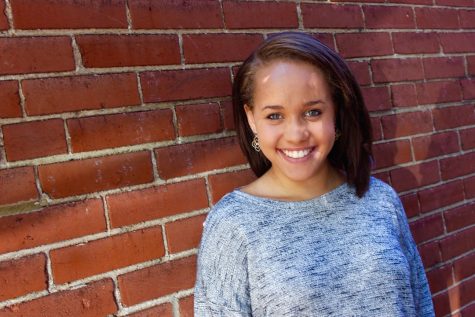
Camille is a senior at Clayton High School and has spent her time at CHS calling the Globe office her second home. She has a deep passion for journalism and enjoys the challenge...

Katherine Sleckman is a Sophomore. She loves to take pictures and play Lacrosse. Katherine is excited to be on Photojournalism for Globe for the first time this year.



